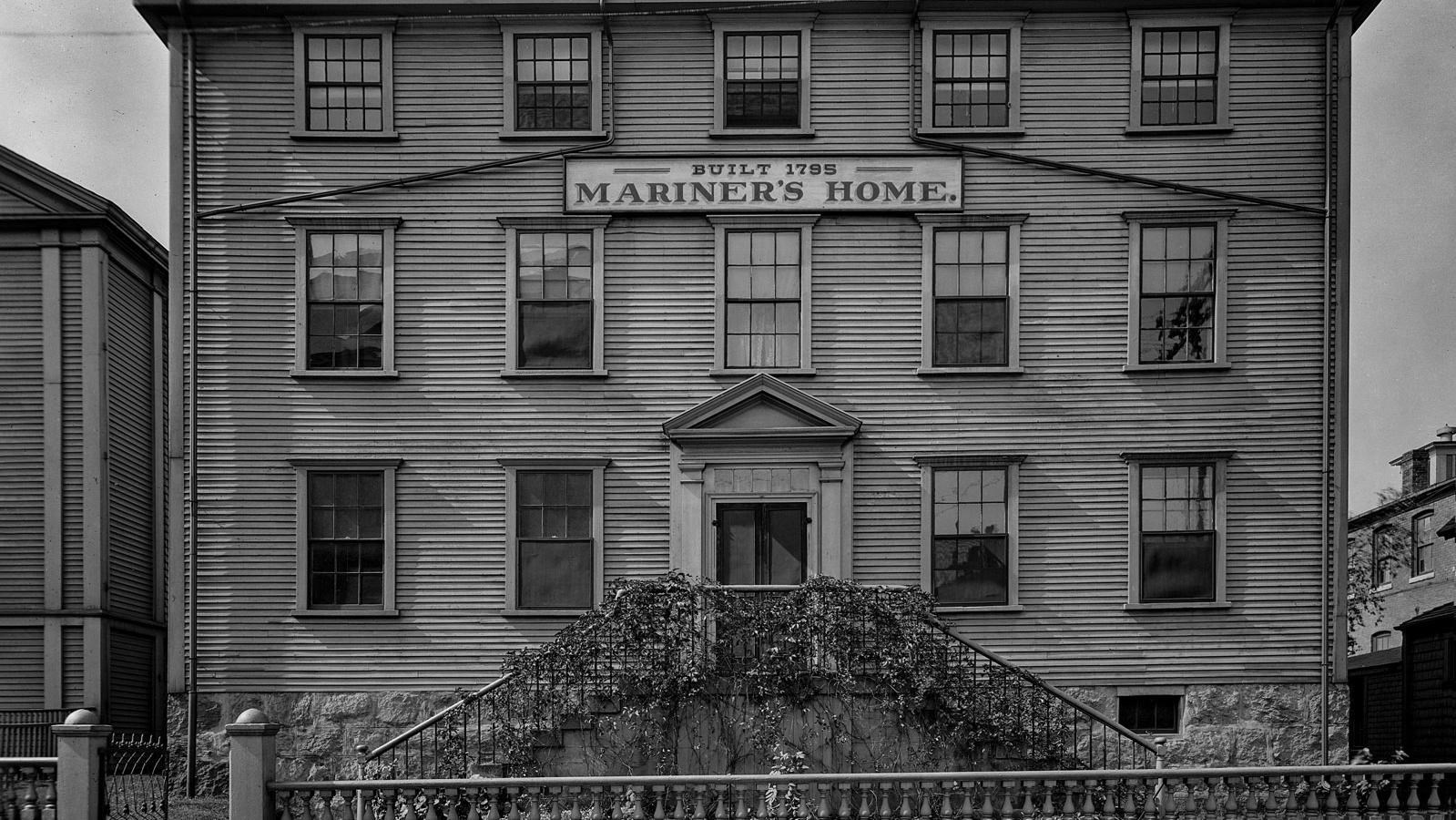Last updated: February 7, 2023
Place
Mariners Home Place

NPS Photo
Accessible Rooms, Accessible Sites, Elevator, Information
About
Built circa 1787 by William Rotch, Jr. as a private residence, this 3-story Federal style structure was moved to this site from its original location on the southwest corner of William and North Water Streets. After the death of William Rotch, Jr. In 1850, the building was donated to the New Bedford Port Society and moved to this site. The Mariners’ Home was opened for its present use as a home for transient mariners in 1857. Today, the Mariners’ Home is used as offices and exhibition space.
History
William Rotch Jr. and his family moved to New Bedford from Nantucket between May and June 1788 to take over the New Bedford branch of the family sperm whaling business.
By 1790 he and his wife Elizabeth built a new home on the southwest corner of William and North Water streets on the site of his grandfather Joseph Rotch’s house. Joseph, who helped pioneer the colonial whale fishery of Bedford Village, died in 1784. His house had been burned by the British during the American Revolution. William and his second wife Lydia Scott Rotch, moved from this house up the hill to a new house on County Street in 1834.
From 1834 to 1850, William Rotch Jr. rented his home for a variety of commercial uses. After his passing in 1850, William’s daughter Sarah Rotch Arnold donated the home to the New Bedford Port Society. It was moved up to Johnny Cake Hill and placed next to the Seamen’s Bethel, where it became known as the Mariners’ Home.
Beginning in 1851, the Ladies Branch of the New Bedford Port Society for the Moral Improvement of Seamen (established in 1830) operated the Mariners’ Home as a safe and moral boarding house for whalers, fishermen, and other mariners in the Port of New Bedford. The Mariners’ Home was purposefully located close to the Seamen’s Bethel (built in 1834) where sailors could hear sermons and gain reassurance and inspiration before setting off on their long voyages. The Mariners’ Home provided a haven for New Bedford seamen and fishermen into the 21st century.
